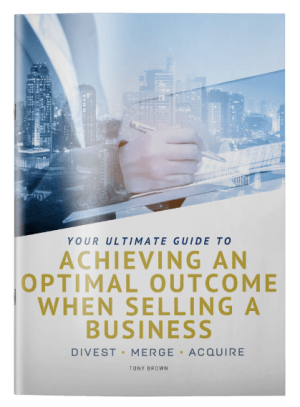The holy grail of business opportunity marketing is to quickly and efficiently reach large numbers of target investors. With the right strategy and resources, this can be far simpler than most advisors expect.
This article sets out some of the alternatives available to marketers of business opportunities.Target investors are those who place the most strategic value on a business, with the lowest level of associated risk. As a result, they are often more committed to a process, and are likely to pay more than buyers without a strategic interest (i.e. general investors who attach no strategic value and are therefore more focussed on return from a standalone business).
Examples of target investors include:
- Existing industry players: Larger competitors, or those of a similar size with the capacity to fund an acquisition and who can leverage off customers, suppliers, technology, distribution channels etc.
- Private Equity firms: Currently participating in, or looking to enter the industry. PE Firms often have a wider agenda in mind than just one firm, reducing their portfolio risk and adding strategic value to each acquisition.
The benefits of targeting strategic investors in large numbers are obvious:
- Creates a competitive process where a strong contingent of prospective purchasers respond and are considering the opportunity simultaneously;
- Generally attracts more sophisticated, experienced buyers – critical to a smooth transaction;
- Clients can clearly see how effective the marketing has been and can more confidently accept the ensuing negotiations and offers as being representative of the market.
The result usually transfers into receiving a greater number of reasonable offers that the vendor is prepared to accept, so a deal is more likely to be done.
Despite this, surprisingly few M&A advisory firms seem to have risen to the challenge and invested in effective capabilities to reach their targets.
Let’s look at some of the alternatives available to marketers of business opportunities.
1. Mass-marketing (non-targeted, expensive).
Mass marketing involves press or other similar high profile forms of publicity. Many a client has seen their money wasted on expensive press advertising only to see little or no responses from each ‘hit’.
These forays may cost more than $2,500 each and appear for one day in specific publications.
This would rank as the most costly and least effective of all marketing activities of business opportunities.
The chances of a target, or one of their colleagues, seeing the advert are very slim indeed.
2. Individual targets with tailored information (highly-targeted, very time consuming).
Most boutique M&A advisory firms, accountants or others who market SME’s in the $1M-$50M market may rely on a significant amount of research to produce a very limited number of targets.
Called the ‘hunt and peck’ method (coined from how some people type on a keyboard: one painful letter at a time), this involves an analyst manually researching key words or trolling through past correspondence for possible matches.
Sometimes the fruit of this process is a list of half a dozen or so prospects, which can be made aware of the opportunity directly (i.e. cold calling, email, tailored proposals).
The advisory firm may get lucky and reach an interested party and a process can start. But if their interest falls off, the process can easily stall until they do another round of hunting and pecking.
How can clients be confident their business opportunity has been presented to a representative market, you might ask?
And how do they know if they have achieved the best possible outcome from such a process?
While this approach certainly has its merits in the context of a wider marketing strategy, particularly in the larger end of town with businesses of a $50M+ Enterprise Value (EV) where the number of strategic buyers decreases significantly, it is highly inefficient and limiting in the $1M-$50M EV segment.
Accountants or others embarking on such a process could be letting their clients down if they represent that they have the means and expertise to properly market their client’s business. The risks are clearly greater once they step onto this very specialised field without the right equipment.
3. Websites (non-targeted, lower cost, lower quality of respondents).
Internet marketing has largely replaced press as the preferred large scale marketing medium.
Not only are adverts relatively low cost, but they are available to be seen 24/7 and can be searched using key words. Leading sites also have the facility where purchasers can enter their areas of interest and be contacted when a match is uploaded.
Another benefit is that their market reach is worldwide, to cover overseas investors targeting particular business profiles.
To those without other marketing resources (per below), website marketing represents a relatively attractive generic way to achieve some market coverage.
The shortcomings are that it is a comparatively passive form of marketing, where the information is ‘put out there’ and it is up to those performing active searches to find it and respond. This will reach those whom are motivated enough to search and subsequently respond, but more importantly, it misses those who may not use internet searches and who would be interested but are not actively searching then and there.
4. Direct targeted marketing (with the right resource)
In Divest Merge Acquire’s experience, the most effective way to market a business in the value range $1M-$50M is via direct targeted marketing to key industry players. This involves distributing a large number of letters/emails to key industry players identified to have potential strategic interest in each particular business opportunity.
The benefits of targeted industry marketing are clear:
- High number of strategic buyers contacted;
- Faster process and more target responses in a short timeframe;
- Contact not only buyers who are actively seeking acquisitions, but also those who fit the target profile but may not be currently looking;
- Drive a more competitive process with a larger number of target buyers in the process, facilitating a faster transaction and maximising vendor outcomes.
This all leads to higher conversion/success rates.
However, such targeted marketing requires a database tailored specifically for M&A activities, containing:
- Readily searchable and actionable contact points for particular industries, regions or groups;
- Ability to stratify contacts by key industry classification or demographics to allow only targeted groups to be contacted;
- Current, relevant data;
- Ability to readily determine each target organisation’s M&A aspirations;
- Database accuracy and usefulness that increases with regular activity.
While it may be possible (albeit, at significant cost) to acquire, build or otherwise access a database of names and addresses, the real power of such a database lies in the accumulated history and parameters it has recorded to determine each target organisation’s M&A aspirations.
Marketing Strategy
The best strategy is a combination of 2, 3 and 4 to cover the local, national and global markets; and gain the attention of not only those purchasers actively looking, but those not currently seeking an opportunity (i.e. draw buyers to the market).
How does Divest Merge Acquire market business opportunities?
The answer: a combination of the above approaches.
While Divest Merge Acquire posts all opportunities on high profile websites, this historically generates fewer than 14% of all final buyers. Whilst the results from website marketing leaves much to be desired, the primary value in these entries is to make the opportunity more visible to overseas purchasers who generally look first to the most mainstream marketing channels available in a target country.
The bulk of Divest Merge Acquire’s marketing muscle lies in its database marketing capabilities. Divest Merge Acquire has developed an effective integrated M&A database and marketing system. Millions of dollars have been invested over more than a decade in developing and maintaining Divest Merge Acquire’s database.
Having such a database provides a key point of differentiation and, when integrated with Divest Merge Acquire’s extensive systems and procedures, poses a significant barrier to entry for those seeking to efficiently carry out M&A activities in the $1M-$50M market segment.
This platform lends itself to being further leveraged, as the benefits are exponential. The more the database is used, the more accurate and useful it becomes.
- An effective direct marketing process involves sending direct letters or emails to 1,000-2,000 companies targeted by a Standard Industry Classification (SIC) or equivalent;
- These processes deliver an average of 40 targeted prospective purchasers for each business opportunity taken to market;
- Developed to define market (Aus & NZ business with > 10 employees);
- Actively maintained and current;
- Currently contains 176,000 address book entries categorised as follows:
- Prospective candidates for divestment or merger;
- Prospective Purchaser;
- Referrors;
- Relevant industry SIC Codes attached to all entries;
- Key data on each company and individual (across 88 active fields);
- Online accumulated history and investment parameters for active purchasers.
Other benefits
The database can also be used just as effectively as the basis of performing targeted acquisition searches on behalf of those who know what they are looking for and to attract onto the market prospective targets who would like to sell but who have not taken the substantial step of going to market.

